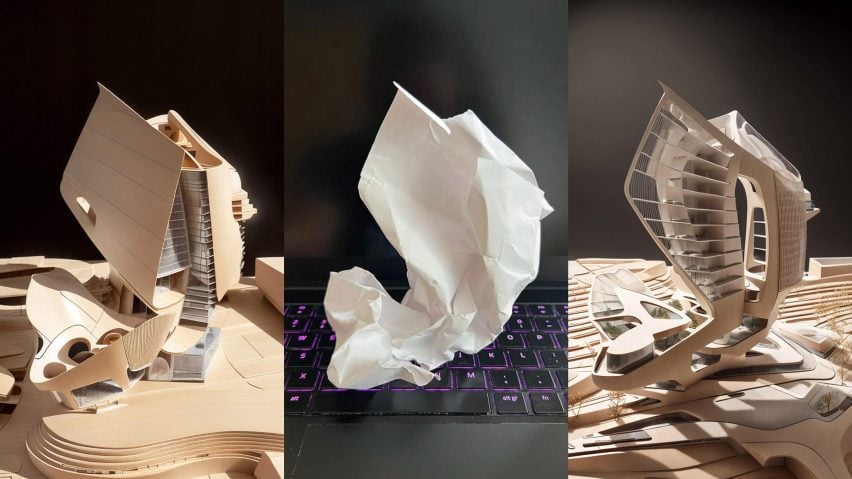
Tim Fu uses "Midjourney for architecture" to transform crumpled paper into starchitect buildings
Designer Tim Fu has used LookX, an artificial intelligence tool trained on architecture, to turn squashed paper into building models that evoke designs by architects Frank Gehry and Zaha Hadid.
The LookX platform, which just launched, is an artificial intelligence-generated content (AIGC) tool that was designed especially for "architecture lovers".

It is trained on an architectural database called ArchiNet and has been "equipped with [the] industry's semantics and annotations," LookX said.
"By integrating multimodality and self-developed algorithms, the large model can be used more widely in architecture," the company added.
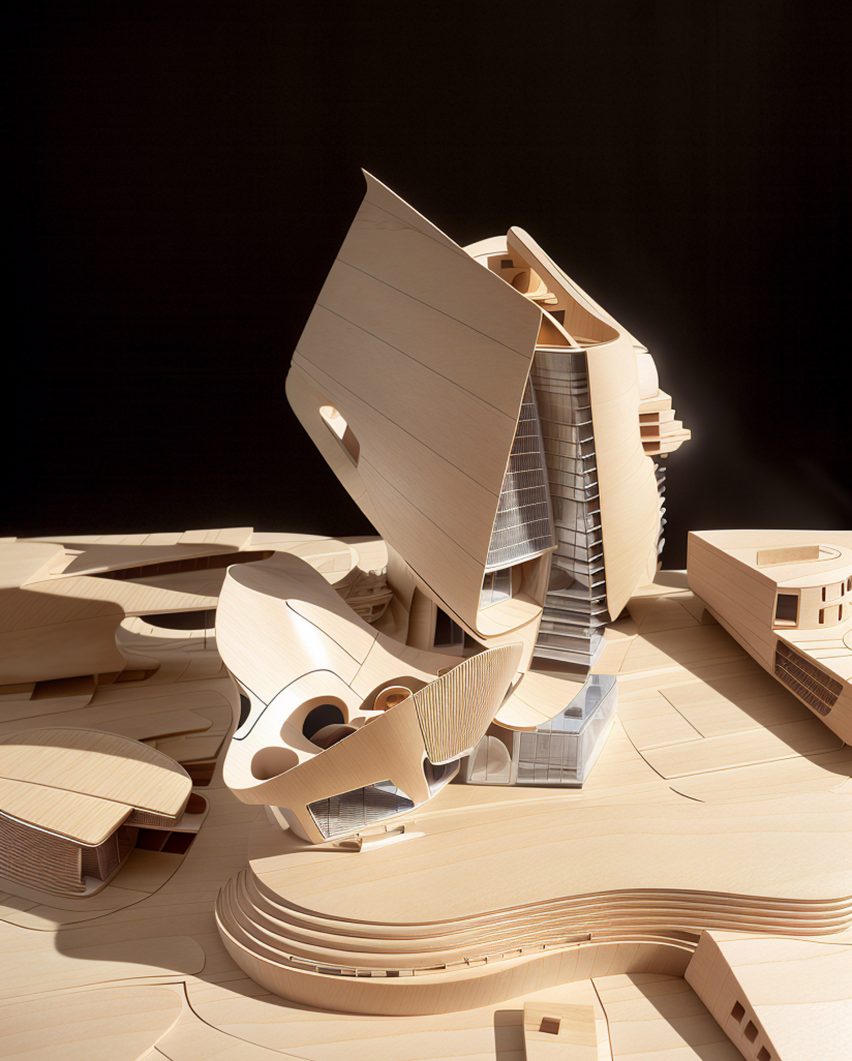
The fact that it is trained on architecture sets LookX apart from existing artificial intelligence (AI) tools, according to Fu.
"Because it's trained specifically on architecture models, it has a lot more capabilities in producing finished results and resolved geometry, as opposed to what you would typically get from Midjourney or DALL-E or Stable Diffusion even right now," Fu told Dezeen.
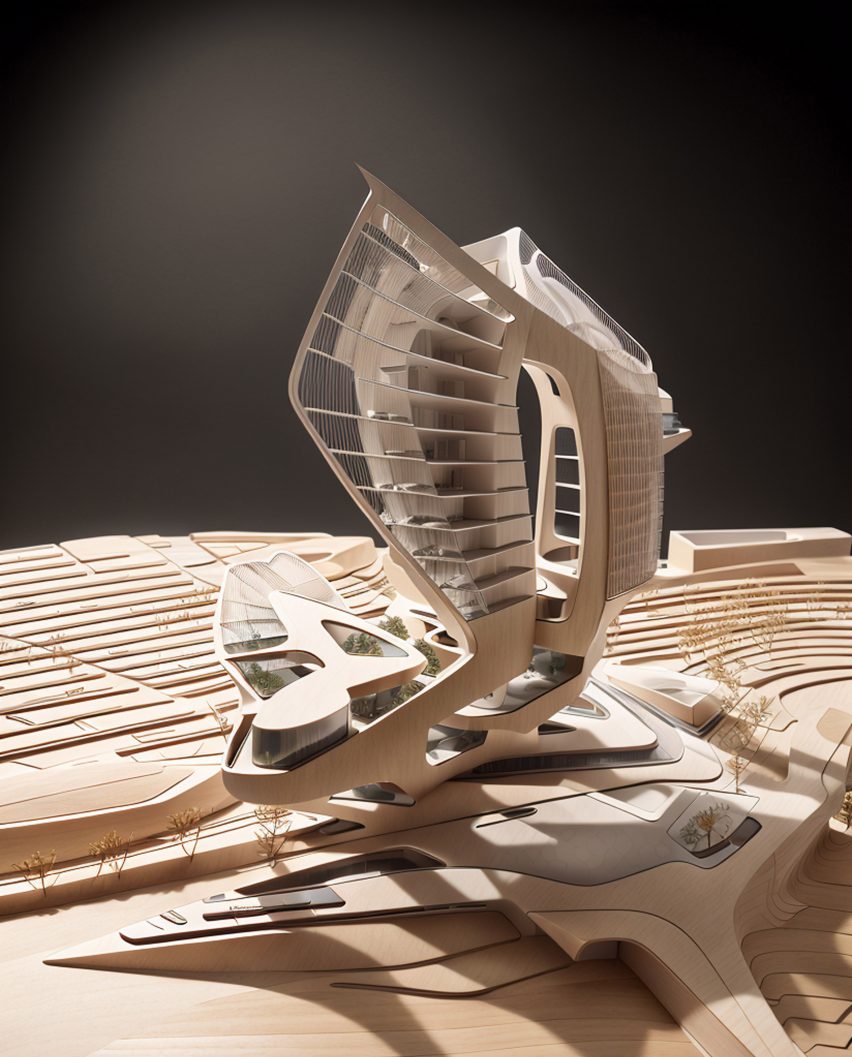
Fu used LookX to design a series of buildings using a visual prompt of crumpled paper, which drew on both architect Gehry's "squashed brown paper bag" building for UTS Business School and The Simpsons TV series episode that referenced it.
"It [came from] knowing that there's a legacy of Gehry's crumbling paper design, and The Simpsons episode immortalised that aspect; that was in the back of my head," he said.
"But I also wanted to showcase how the arbitrariness of an input can be interpreted by the AI to produce very refined results, thus showcasing how the stark contrast between whimsicality and intention can both play a role in design."

Fu, who has worked extensively in AI and is doing a research collaboration with LookX, created designs that resembled those by Gehry as well as ones by architecture studios Zaha Hadid Architects, SANAA, OMA, and Santiago Calatrava.
The designs were made using LookX's flexible Explore mode, which lets users choose foundations and style models, upload images, enter keywords and adjust control parameters.
"That particular model was me using one of the LoRA [low-rank adaptation] models," Fu said. "They're localised clusters of machine learning algorithms, on top of their baseline algorithms, that you can select from the crowd-sourced pool of LoRA models."
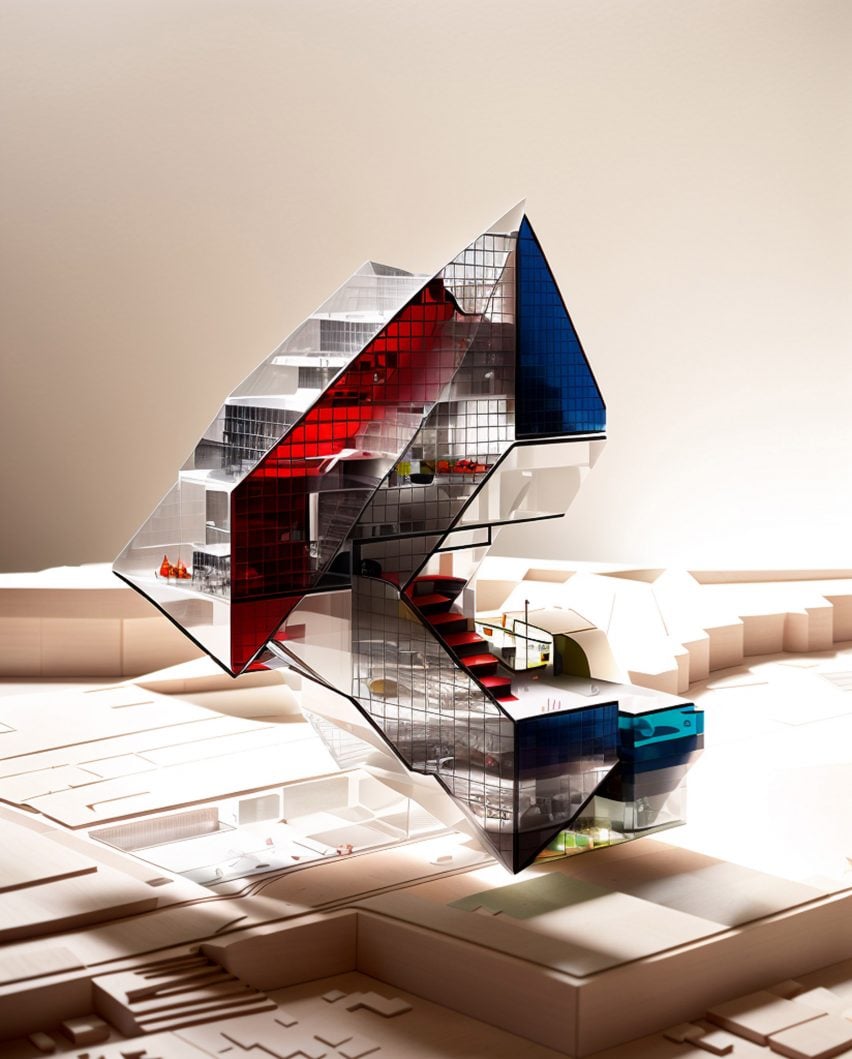
"Then I selected the one that was specially trained for architecture models, wood, acrylic; the whole database is trained on that," he added.
"I attached that model to the main model, and then I generated these images just based on image input, photos of the crumpling papers."
LookX has three core modules: Inspiration Generator, Model Training and Sharing Community. Users can train their own AI models and then share them on the platform.
Fu also used LookX to create visuals of architectural models based on sketches and massing, as well as renders based on massing.
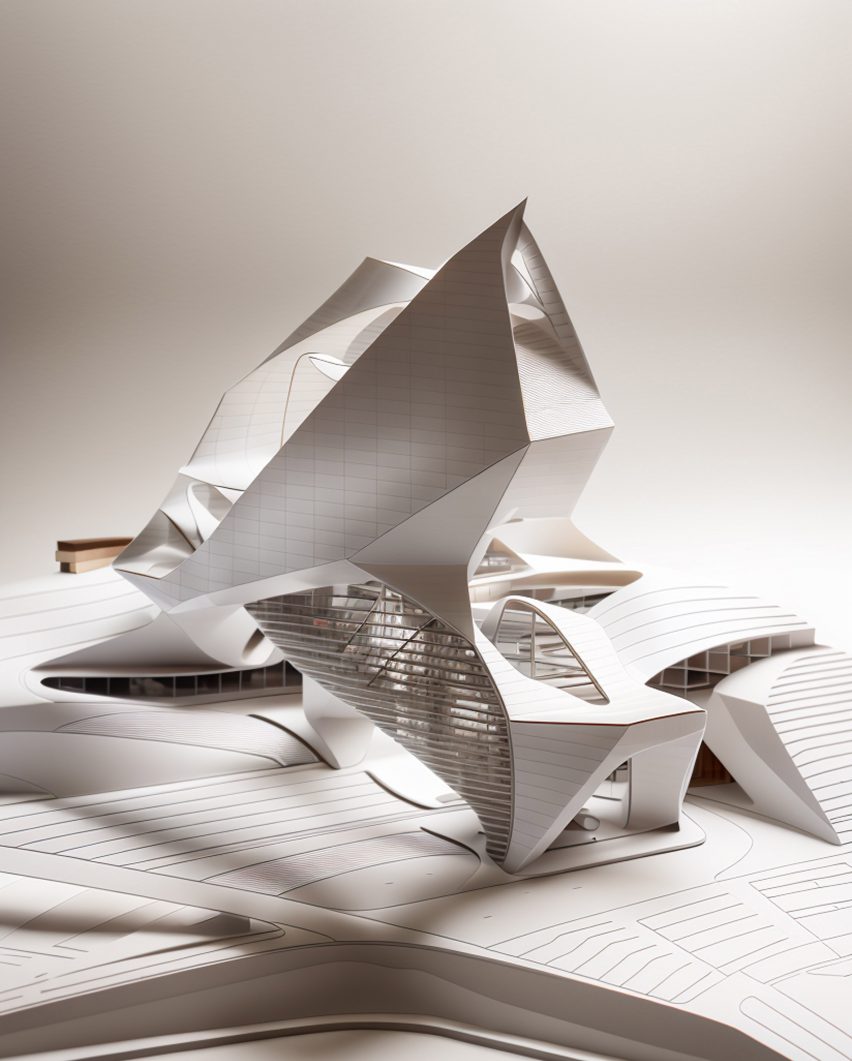
According to the designer, the closest existing AI platform is Stable Diffusion, but he argued that the quality is not comparable.
"The closest thing we have is Stable Diffusion ControlNet, where you input image geometry and its able to pick out the contours," he said.
"From the contours, it generates a Stable Diffusion image result, which is not unlike what we do here with this LookX algorithm, but it has an inferior quality output."

Fu referred to LookX as "the Midjourney killer for the architecture industry," saying he believes it will only continue to develop.
"I was completely captivated by the potential of where this is going because we really needed a Midjourney version for the architecture industry," he said.
"It has so much potential, not only in the present but the future, because it's only going to be going in a much more developed direction."
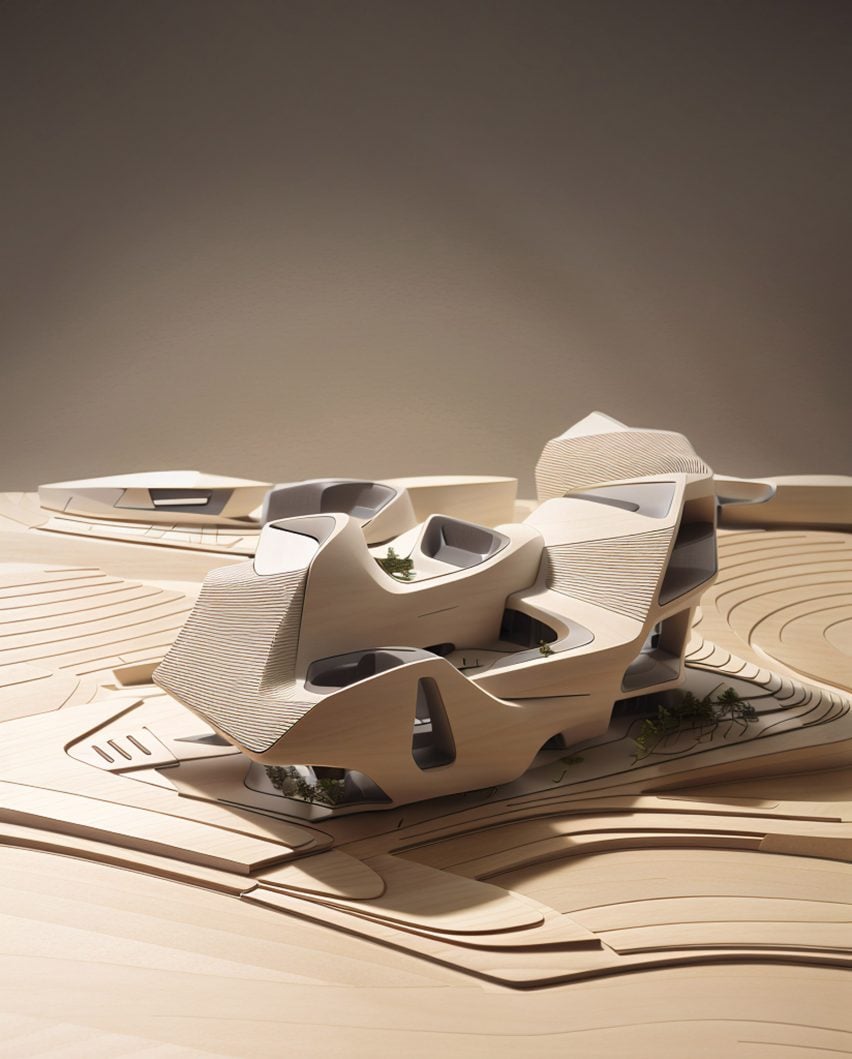
A number of architecture studios have been using AI in their work, including Zaha Hadid. In a roundtable discussion, its principal Patrik Schumacher said the studio is developing "most" projects using AI-generated images.
Architecture studio Hickock Cole recently unveiled images of a mixed-use building designed using ChatGPT that features a green roof and a swimming pool.
The images are courtesy of Tim Fu.
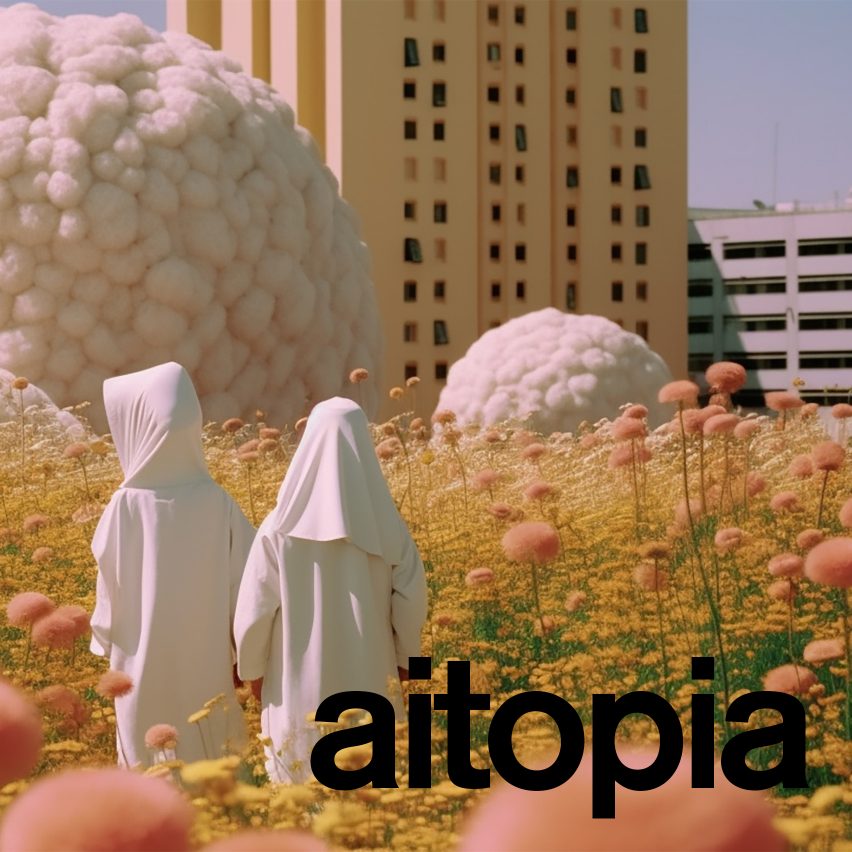
AItopia
This article is part of Dezeen's AItopia series, which explores the impact of artificial intelligence (AI) on design, architecture and humanity, both now and in the future.